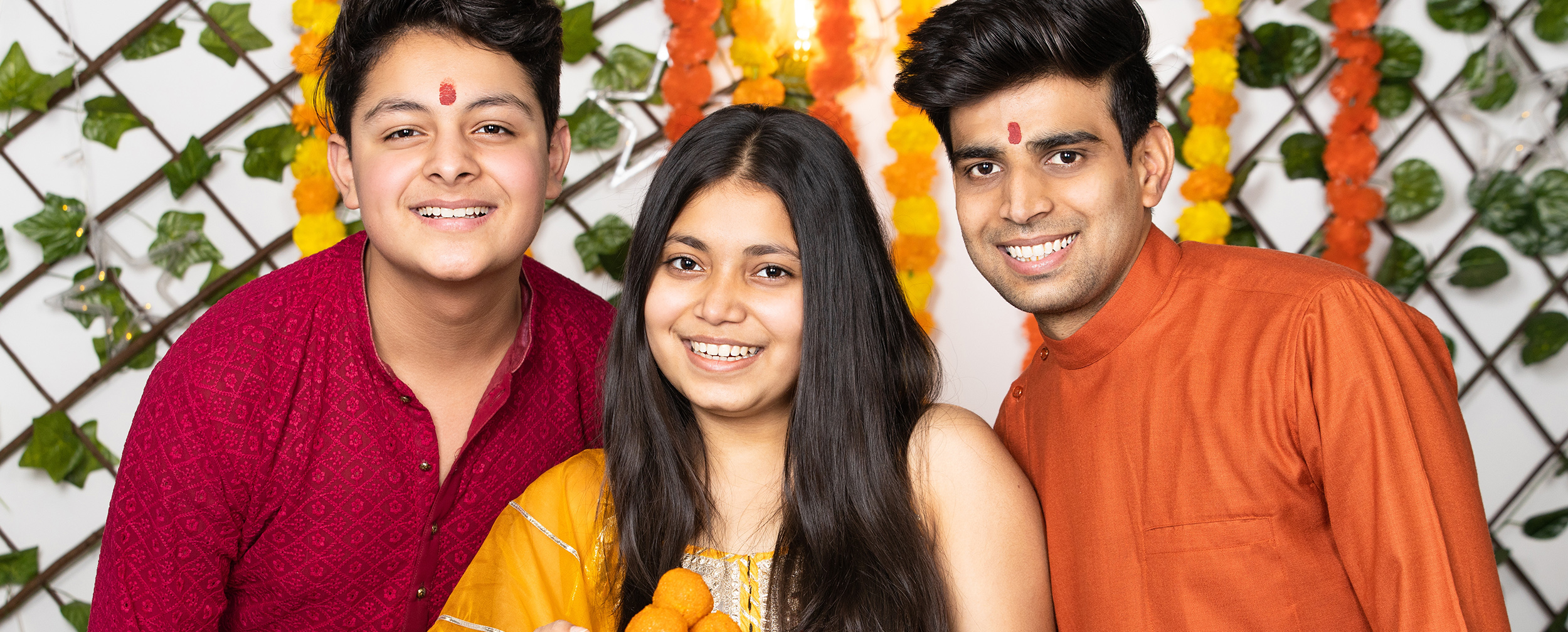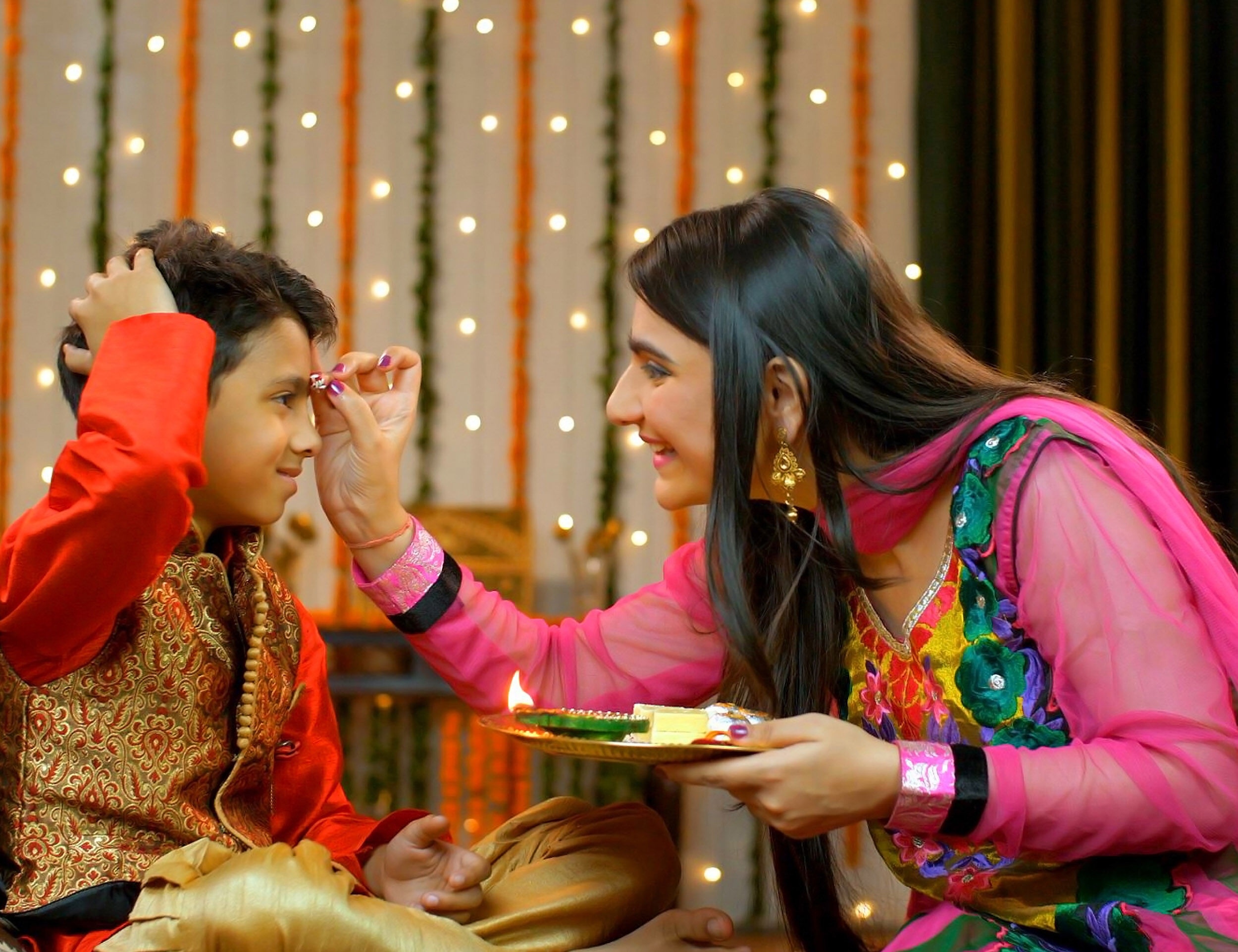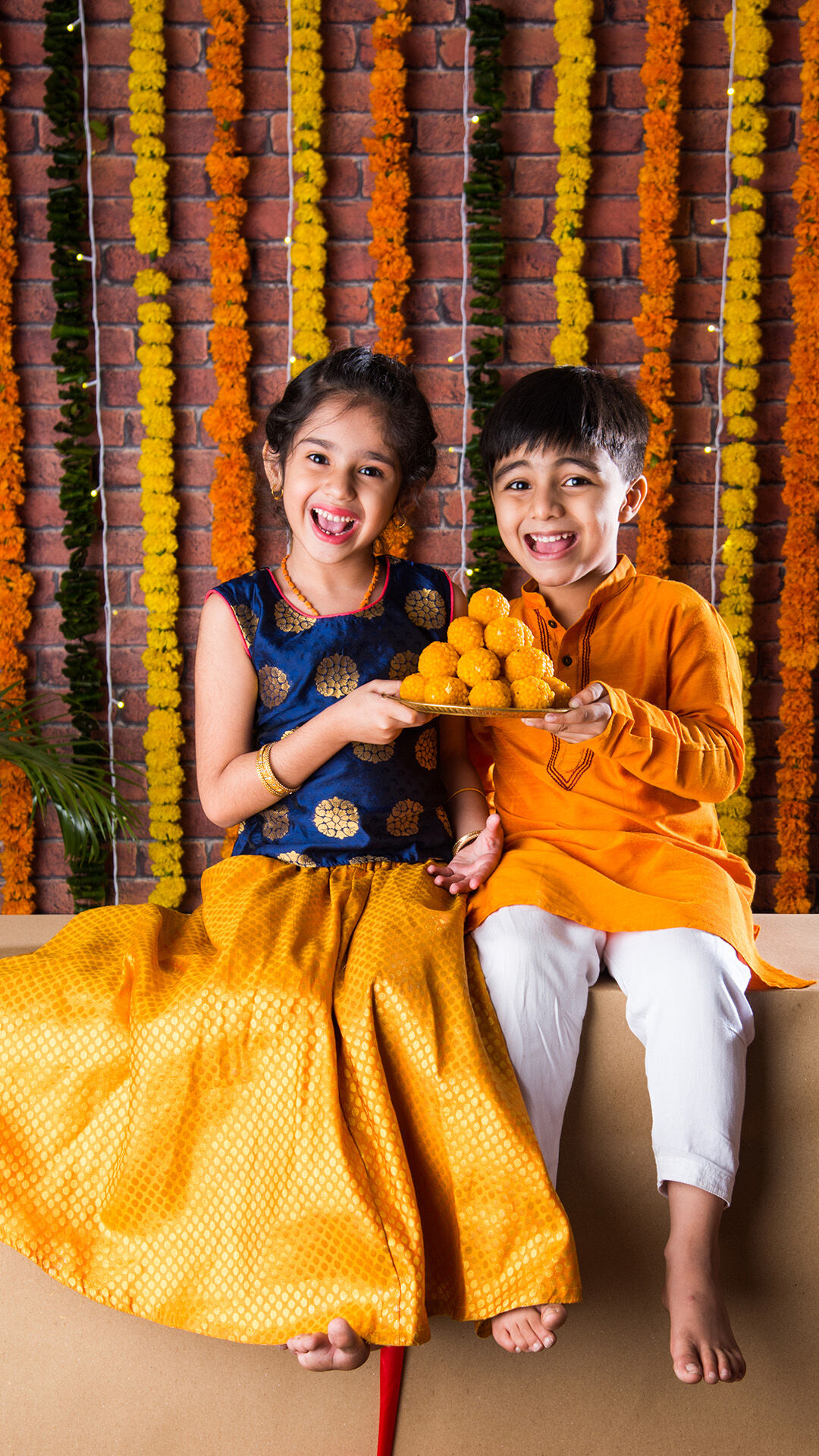STORIES BY MANYAVAR & MOHEY

Lifestyle
When is Bhai Dooj 2025: Complete Guide to Customs & Celebration Ideas
Date 29 September 2025 Reading time: 7-10 mins
After the sparkle of diyas fades and the last firecracker has been burst, there's still one more celebration that wraps up the Diwali festivities with warmth and love. Every sister across India starts checking calendars and planning surprises because the question on everyone's mind is when is Bhai Dooj this year? This cherished festival holds a special place in our hearts, bringing siblings together in a bond that goes beyond mere rituals.
From the tilak ceremony to exchanging gifts, from regional variations to modern twists, let's explore why this post-Diwali celebration continues to be one of India's most beloved family occasions.
What is Bhai Dooj?
The festival of siblings comes with as many names as India has languages - Bhai Dooj, Bhai Phonta, Bhau Beej, Bhai Tika, and Yama Dwitiya. Each name tells a story, each tradition carries centuries of love. The most common name, Bhai Dooj, literally translates to "brother's second day" - referring to the second lunar day after the new moon in the Hindu month of Kartika.
Bhai Dooj in India varies by lunar calculations, but the emotion remains constant. Sisters pray for their brothers' long lives, while brothers pledge protection and support. The festival beautifully extends beyond biological boundaries in modern times. Cousins, close friends who've become like siblings, and even sister-in-laws and brother-in-laws participate in these rituals, making families grow larger with love.
The legends behind this festival are as colourful as the tilaks applied. Lord Krishna visiting his sister Subhadra after defeating Narakasura, and Yamraj being welcomed by his sister Yamuna - both stories speak of reunion, care, and blessings. These mythological tales have shaped how Bhai Dooj is celebrated across different regions, each adding its own flavour to the festivities.
When is Bhai Dooj This Year?
So, when is Bhai Dooj this year? In 2025, this celebration falls on Thursday, October 23rd. The auspicious timing makes it convenient for working professionals to take a day off and celebrate with their siblings. The Dwitiya Tithi begins at 8:16 PM on October 22nd and continues until 10:46 PM on October 23rd, giving families flexibility in planning their celebrations.
When is Bhai Dooj in India specifically timed for the tilak ceremony? The Aparahna Time runs from 1:13 PM to 3:28 PM, while Rudraksha Ratna suggests 12:34 PM to 2:51 PM. This roughly two-hour window is considered the most auspicious for performing the main rituals.
The Significance of Bhai Dooj
Beyond the question of when Bhai Dooj is, lies the deeper meaning of why we celebrate. This festival serves as an annual reminder of sibling bonds that often get lost in our busy lives. The tilak isn't just vermillion and rice - it's a sister's prayer made visible, her wishes for her brother's prosperity taking physical form.
The timing of Bhai Dooj in India - right after Diwali - carries significance too. After days of community celebrations, pujas, and parties, this festival brings the focus back to family, specifically to the brother-sister relationship. It's like a gentle landing after the high of Diwali, reminding us that festivals are ultimately about strengthening bonds with those we love.
The festival also serves a practical purpose in modern times. With families scattered across cities and countries, knowing exactly when is Bhai Dooj gives siblings a fixed date to reunite. Video calls have replaced some physical meetings, but the emotion remains intact. Many NRI siblings plan their India visits around this time, combining Diwali and Bhai Dooj celebrations.
How is Bhai Dooj Celebrated?
The sunrise on Bhai Dooj brings a flurry of activity in Indian homes. Sisters wake up early, some even before dawn, to prepare for the day's rituals. The preparation starts with gathering puja essentials - a steel or silver thali, fresh flowers, roli or kumkum, akshat (rice), sweets, fruits, and a small diya.
Regional variations make each celebration special:
Bengali Bhai Phonta:
The tilak here is special - made from sandalwood paste, kajal, and ghee. Sisters fast until the ceremony and chant specific mantras while applying the tilak. The feast afterwards includes mishti doi, sandesh, and other Bengali sweets. Brothers reciprocate with sarees or jewellery, keeping the tradition alive.
Maharashtrian Bhau Beej:
Drawing a square with rice flour for the brother to sit becomes an art form. Sisters perform aarti with a unique tradition - they must scold their brothers playfully before the tilak! This mock scolding, followed by applying tilak, represents driving away evil and bringing good fortune.
The gift exchange has evolved with the times:
• Cash and gift vouchers
• Jewellery pieces (especially earrings and bangles)
• Festive wear from brands like Mohey
• Gadgets and accessories
• Personalised gifts with photos and messages
• Experience vouchers for spas or restaurants
Modern celebrations also include:
• Virtual tilak ceremonies for long-distance siblings
• Bhai Dooj parties with extended family
• Restaurant bookings for special sibling lunches
• Professional photoshoots in festive attire
• Social media posts with creative hashtags
What Makes Bhai Dooj Special?
Bhai Dooj stands out because it celebrates a relationship that's often complicated, always evolving, yet fundamentally important. Unlike other relationships we choose, siblings are given to us, making this bond unique in its mix of rivalry and protectiveness.
The festival's timing after Diwali creates a beautiful transition. Bhai Dooj celebrations mark the end of the festive season, but instead of post-festival blues, it offers one more reason to celebrate. It's like the perfect ending to a great movie - satisfying and memorable.
What makes modern celebrations special:
Inclusivity Beyond Blood Relations:
Today's Bhai Dooj includes chosen families. Close friends who've been through thick and thin together, cousins raised as siblings, even brothers-in-law and sisters-in-law, participate. This expansion reflects how Indian society adapts traditions while keeping their essence intact.
Revival of Traditions:
Young Indians are rediscovering traditional rituals, adding their own twists. They research family customs, learn regional songs, and even document recipes passed down generations. Social media has unexpectedly become a tool for cultural preservation.
Gender-Neutral Adaptations:
Some families now include rituals where brothers also pray for their sisters' well-being. This reciprocal blessing reflects changing dynamics while respecting traditional structures.
Creating New Memories:
When Bhai Dooj is celebrated, rituals become an excuse for siblings to:
• Plan surprise visits
• Recreate childhood photos
• Cook together like old times
• Share inside jokes and memories
• Start new traditions for the next generation
The beauty of Bhai Dooj celebrations lies in its simplicity. No elaborate pandals, no community gatherings - just siblings coming together to acknowledge their bond. In our Instagram-perfect world, this festival reminds us that some relationships don't need filters.
Celebrating the True Spirit of Bhai Dooj
As you plan your celebration this year, remember that the most precious gift isn't what you wrap in shiny paper, but the time you spend together, the memories you create, and the promise to be there for each other. After all, Bhai Dooj celebrations aren't just marked on calendars - they live in every shared joke, every supportive phone call, and every moment siblings stand by each other throughout the year.
Celebrate the bond in style with Mohey’s exquisite festive wear for women, designed to make every occasion radiant. With Mohey, your Bhai Dooj moments shine brighter.







